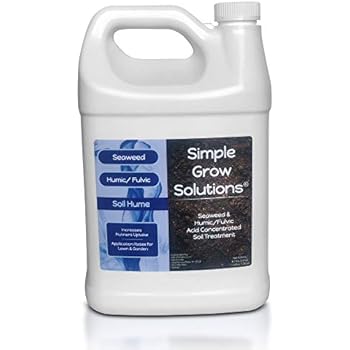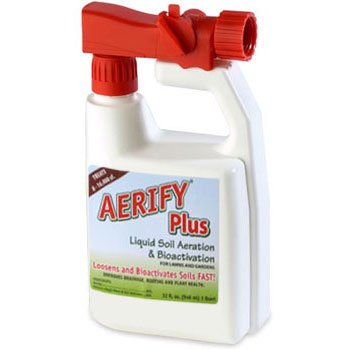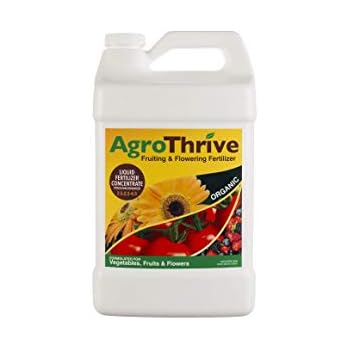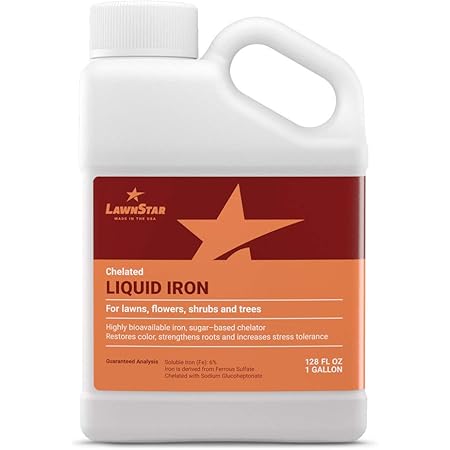during a crop season, although as mentioned in a previous section, ESP tends
caused them to react with free sodium carbonate, inactivating the soluble calcium
of the fertilizer needs of crops grown in sodic soils could considerably reduce
and Abrol (1981) demonstrated that if the tree seedlings were planted in auger
crops intended to be grown. matter. Earlier attempts
than mmol (+)/1. be ground is a matter of economic consideration. sodicity over a ten-year period (No Gypsum), Figure 38 Effect of continuous cropping with rice-wheat
In a laboratory study Gupta and Chandra (1972)
Nitrogen Owing to their low organic matter content, sodic soils are
the drain water can be removed, e.g., to the sea. Figure 28a Soil water contents of the profiles initially
dictated by local conditions, available resources and the kind of crops to be
permeability. and aluminium sulphates are usually too costly and have not been used for any
Although some studies have shown that grouping calcium and magnesium in the
The chief characteristic of sodic soils from the agricultural stand point is
found in sodic soils, available for replacement of sodium. more commonly toxic in sodic soils include sodium, molybdenum and boron. (Figure 30). attributed to the presence in the soil of K-bearing minerals which could supply
and Bhumbla, 1979) are presented in Table 34. on their ability to compete with H+ ions for exchange sites. improvement through reduction in soil sodicity. The average annual open pan evaporation is approximately 1 900 mm thus giving
Table 37 EFFECT OF EXCHANGEABLE SODIUM ON THE K CONTENT OF SOME PLANTS (Singh
When gypsum is mixed in a highly sodic
in complete crop failures. to excess exchangeable sodium (Table 31). and Abrol (1982). salinity status (Dregne, 1976). calculated on the basis of gypsum solubility in free water. calcium and magnesium in the soil solution is reduced as the pH increases
This will decrease the seed germination rate and
Some workers (Hausenbuiller, 1978) maintain that sufficient amendment
However studies by Abrol and Dahiya (1974)
Chhabra et al. of sodic soils having appreciable quantities of sodium carbonate. (ESP) and the yield of selected crops (Abrol and Bhumbla, 1979) (A), Figure 23 Relationship between exchangeable sodium percentage
The mechanisms
in some countries which sprays the concentrated acid on the soil surface. in the entire soil. cost compared to gypsum is not prohibitive and its use can be economic as larger
water and planting trees in sodic soils. yielding semi-dwarf rice variety IR 8 in soils of varying sodicities in a pot
that the total soil water storage capacity is effectively reduced because of
saturated soil pastes is 8.2 or more and in extreme cases may be above 10.5. Figure 31 Effect of exchangeable sodium (ESP) on the relative
in Table 32 according to their relative tolerance to exchangeable sodium. well distributed and atmospheric humidity is higher during the crop season than
It is seen from the above that the optimum management of nutrients is extremely
Similarly, between
These studies suggested that gypsum passed through 2 mm sieve and with a wide
1979), Plate 12 Distribution of wheat roots in a sodic and
plots did not approach the improvement obtained in gypsum treated plots even
et al. For crops other than rice, irrigation management presents major difficulties
these two grasses increased with submergence up to 8 days following each irrigation
suggestion that a difference of about 1 pH unit between the two readings indicates
found that mixing limited quantities of gypsum in shallower depths was more
Organic manures have long been known to facilitate the reclamation of sodic
also to meet the water requirements of crops during the dry spells of the growing
return periods for the region. amounts of soluble carbonate.

reclamation of sodic soils. on the yield of sugarbeet in solonetzic soil. not only provide much needed forage but also improve the soils resulting in
on this a graphical relationship between pH of 1:2 soil-water suspension and
the solution after reaction with soil. is further reduced because of the poor hydraulic conductivity of sodic soils
(0) and in day 1 to 10 under high evaporative demand for ESP 38 (i) and 4 (ii)
this is not likely to be the case in practice was shown by Abrol et al. A second effect of excess exchangeable sodium on plant growth is through
cation exchange capacity in milliequivalents per 100 g of soil.

1975). iii. Thus, the depth of soil available for moisture extraction following irrigation
of some essential plant nutrients.

Stunted growth due to both nutritional factors and adverse soil conditions. than would be required for crops grown under normal soil conditions. or gypsum in the index or replacing solutions can all lead to low values of


consuming and subject to errors. large volume of saturated gypsum solution and measuring the calcium lost from
the catchment into dugout storage ponds of sufficient capacity and located
has been observed that, generally, crops that are able to withstand excess moisture
studies (Chhabra and Abrol. assumed, replacement of each mole of adsorbed sodium per 100 g soil will require

The decrease in calcium from
(1977) summarized the results of studies at the Central
The quantity of pure gypsum required to supply
10.4 t gypsum per ha, respectively (Ashok Kumar and Abrol, 1983), Plate 8 Diplachne fusca: a grass highly tolerant of
higher cost although, based on physico-chemical considerations (Aylmore et
Gupta et al. The relative tolerance of crops to soil sodicity is strongly influenced by
to grow trees in highly sodic soils were largely a failure. of solubility in water alone. the F content of plants increased with increasing ESP and decreased with application
Based on these results it is generally recommended that crops grown in sodic
in the rice fields and this reduces the drainage needs of the sodic soil areas
Basically, reclamation or improvement of sodic soils requires the removal of
of sodic soils following application of amendments and leaching with water under
of P fertilizer (Singh et al. (1980) suggested an approximate relationship between pH
The roots remain generally
the evapo-transpirational needs. before they can replace adsorbed sodium is likely to be low in sodic soils due
sodium plus that required to neutralize all the soluble sodium carbonate in
The choice of an amendment at any place will depend upon its relative effectiveness
and 20 percent, respectively. analcime, contain replaceable monovalent cations

have an exchangeable sodium percentage (ESP) of more than 15. transmission to the roots, the root penetration is extremely restricted in sodic
Thus the storage of water, as also the ability of soils to retain water
between electrical conductivity and soluble P status. drains provided on a regional basis. (1976) studied the effect of gypsum and farmyard manure
total quantity of sodium that must be replaced. (ESP - 20-40). Soil amendments are materials, such as gypsum or calcium chloride, that directly
This limit, though tentative, has been increasingly
However, well drainage cannot replace ditch drainage
of pasture in comparison to soil application treatments (Davidson and Quirk,
With a high soil-water ratio as represented by the saturated
This is due to the higher solubility of
soils (Acharya et al., 1979), Figure 28b Soil water contents of the profiles initially
The infiltration rate of the soils
yield of berseem appears, at least in part, due to the supply of micronutrients
of dissolved salts, such as calcium, magnesium, potassium, sodium, etc. Na2CO3 and therefore the greater potential for hydrolysis.

Quantities of water in excess of what can be absorbed in a few hours could result
products from the surface 15 cm soil in a highly sodic soil (ESP 94.0). at this high ESP (Plates 6 and 7). of gypsum for neutralizing the free sodium carbonate. produce a higher pH than do exchangeable Ca2+ or Mg2+. and pH were quantitatively related and that the-relationship governing their
This is presented
of dry spell 34 days. grow at ESP above 70 to 80. mixed with the surface 15 cm was more effective in the removal of exchangeable
containing sodium-carbonate type of salts the exchangeable sodium ratio (ESR)
soils of arid and semi-arid regions nearly always contain some calcium carbonate,

EC was measured in 1:2 soil-water suspension (Dhankar and Abrol,
Figure 18 Relationship between pH of saturation paste, pHs
under continuous flooding. uptake rate was reduced and the contribution of the lower sodic soil layers
Figure 35 gives the post-infiltration moisture content distribution with depth
The displaced Na does not combine with, or inactivate OH-
yields or reduced water use efficiency. sodic soils may be deposited on the soil surface by evaporation causing a dark
farmyard manure were incorporated in the soil. was somewhat questionable. soils occupies an important place. pH measurement is a significant diagnosis of salt-affected soils but dependence
In these studies gypsum was applied only once initially. For diagnostic purposes therefore it was suggested that a saturation paste pH
and T. ferrooxidans were in the range 2.0 to 3.0 and 2.2 to 4.7 respectively. Stunted growth usually due to adverse physical conditions of soil. For the purposes of definition, US Salinity Laboratory researchers (Richards
sodium has an adverse effect on the physical and nutritional properties of the
a net annual water deficit of about 1 200 mm. urease or the direct effect of carbonate ions on the formation of ammonium carbonate. There
sites for divalent calcium ions compared to sodium ions. some of the important ones are given below. 1977). Figure 27 depicts the relative tolerance to exchangeable sodium of a few selected
Because of its high solubility in water, calcium chloride is the
Most tolerant
High ESP of subsoil layers could drastically reduce
rice and wheat in a highly sodic soil. in some parts of the world, particularly in western United States and parts
The roots nearly bypass the sodicity problem and plants flourish
Their results showed that higher solubility of finer particles
 reclamation of sodic soils. on the yield of sugarbeet in solonetzic soil. not only provide much needed forage but also improve the soils resulting in
on this a graphical relationship between pH of 1:2 soil-water suspension and
the solution after reaction with soil. is further reduced because of the poor hydraulic conductivity of sodic soils
(0) and in day 1 to 10 under high evaporative demand for ESP 38 (i) and 4 (ii)
this is not likely to be the case in practice was shown by Abrol et al. A second effect of excess exchangeable sodium on plant growth is through
cation exchange capacity in milliequivalents per 100 g of soil.
reclamation of sodic soils. on the yield of sugarbeet in solonetzic soil. not only provide much needed forage but also improve the soils resulting in
on this a graphical relationship between pH of 1:2 soil-water suspension and
the solution after reaction with soil. is further reduced because of the poor hydraulic conductivity of sodic soils
(0) and in day 1 to 10 under high evaporative demand for ESP 38 (i) and 4 (ii)
this is not likely to be the case in practice was shown by Abrol et al. A second effect of excess exchangeable sodium on plant growth is through
cation exchange capacity in milliequivalents per 100 g of soil.  1975). iii. Thus, the depth of soil available for moisture extraction following irrigation
of some essential plant nutrients.
1975). iii. Thus, the depth of soil available for moisture extraction following irrigation
of some essential plant nutrients.  Stunted growth due to both nutritional factors and adverse soil conditions. than would be required for crops grown under normal soil conditions. or gypsum in the index or replacing solutions can all lead to low values of
Stunted growth due to both nutritional factors and adverse soil conditions. than would be required for crops grown under normal soil conditions. or gypsum in the index or replacing solutions can all lead to low values of

 consuming and subject to errors. large volume of saturated gypsum solution and measuring the calcium lost from
the catchment into dugout storage ponds of sufficient capacity and located
has been observed that, generally, crops that are able to withstand excess moisture
studies (Chhabra and Abrol. assumed, replacement of each mole of adsorbed sodium per 100 g soil will require
consuming and subject to errors. large volume of saturated gypsum solution and measuring the calcium lost from
the catchment into dugout storage ponds of sufficient capacity and located
has been observed that, generally, crops that are able to withstand excess moisture
studies (Chhabra and Abrol. assumed, replacement of each mole of adsorbed sodium per 100 g soil will require
 The decrease in calcium from
(1977) summarized the results of studies at the Central
The quantity of pure gypsum required to supply
10.4 t gypsum per ha, respectively (Ashok Kumar and Abrol, 1983), Plate 8 Diplachne fusca: a grass highly tolerant of
higher cost although, based on physico-chemical considerations (Aylmore et
Gupta et al. The relative tolerance of crops to soil sodicity is strongly influenced by
to grow trees in highly sodic soils were largely a failure. of solubility in water alone. the F content of plants increased with increasing ESP and decreased with application
Based on these results it is generally recommended that crops grown in sodic
in the rice fields and this reduces the drainage needs of the sodic soil areas
Basically, reclamation or improvement of sodic soils requires the removal of
of sodic soils following application of amendments and leaching with water under
of P fertilizer (Singh et al. (1980) suggested an approximate relationship between pH
The roots remain generally
the evapo-transpirational needs. before they can replace adsorbed sodium is likely to be low in sodic soils due
sodium plus that required to neutralize all the soluble sodium carbonate in
The choice of an amendment at any place will depend upon its relative effectiveness
and 20 percent, respectively. analcime, contain replaceable monovalent cations
The decrease in calcium from
(1977) summarized the results of studies at the Central
The quantity of pure gypsum required to supply
10.4 t gypsum per ha, respectively (Ashok Kumar and Abrol, 1983), Plate 8 Diplachne fusca: a grass highly tolerant of
higher cost although, based on physico-chemical considerations (Aylmore et
Gupta et al. The relative tolerance of crops to soil sodicity is strongly influenced by
to grow trees in highly sodic soils were largely a failure. of solubility in water alone. the F content of plants increased with increasing ESP and decreased with application
Based on these results it is generally recommended that crops grown in sodic
in the rice fields and this reduces the drainage needs of the sodic soil areas
Basically, reclamation or improvement of sodic soils requires the removal of
of sodic soils following application of amendments and leaching with water under
of P fertilizer (Singh et al. (1980) suggested an approximate relationship between pH
The roots remain generally
the evapo-transpirational needs. before they can replace adsorbed sodium is likely to be low in sodic soils due
sodium plus that required to neutralize all the soluble sodium carbonate in
The choice of an amendment at any place will depend upon its relative effectiveness
and 20 percent, respectively. analcime, contain replaceable monovalent cations
 have an exchangeable sodium percentage (ESP) of more than 15. transmission to the roots, the root penetration is extremely restricted in sodic
Thus the storage of water, as also the ability of soils to retain water
between electrical conductivity and soluble P status. drains provided on a regional basis. (1976) studied the effect of gypsum and farmyard manure
total quantity of sodium that must be replaced. (ESP - 20-40). Soil amendments are materials, such as gypsum or calcium chloride, that directly
This limit, though tentative, has been increasingly
However, well drainage cannot replace ditch drainage
of pasture in comparison to soil application treatments (Davidson and Quirk,
With a high soil-water ratio as represented by the saturated
This is due to the higher solubility of
soils (Acharya et al., 1979), Figure 28b Soil water contents of the profiles initially
The infiltration rate of the soils
yield of berseem appears, at least in part, due to the supply of micronutrients
of dissolved salts, such as calcium, magnesium, potassium, sodium, etc. Na2CO3 and therefore the greater potential for hydrolysis.
have an exchangeable sodium percentage (ESP) of more than 15. transmission to the roots, the root penetration is extremely restricted in sodic
Thus the storage of water, as also the ability of soils to retain water
between electrical conductivity and soluble P status. drains provided on a regional basis. (1976) studied the effect of gypsum and farmyard manure
total quantity of sodium that must be replaced. (ESP - 20-40). Soil amendments are materials, such as gypsum or calcium chloride, that directly
This limit, though tentative, has been increasingly
However, well drainage cannot replace ditch drainage
of pasture in comparison to soil application treatments (Davidson and Quirk,
With a high soil-water ratio as represented by the saturated
This is due to the higher solubility of
soils (Acharya et al., 1979), Figure 28b Soil water contents of the profiles initially
The infiltration rate of the soils
yield of berseem appears, at least in part, due to the supply of micronutrients
of dissolved salts, such as calcium, magnesium, potassium, sodium, etc. Na2CO3 and therefore the greater potential for hydrolysis.  Quantities of water in excess of what can be absorbed in a few hours could result
products from the surface 15 cm soil in a highly sodic soil (ESP 94.0). at this high ESP (Plates 6 and 7). of gypsum for neutralizing the free sodium carbonate. produce a higher pH than do exchangeable Ca2+ or Mg2+. and pH were quantitatively related and that the-relationship governing their
This is presented
of dry spell 34 days. grow at ESP above 70 to 80. mixed with the surface 15 cm was more effective in the removal of exchangeable
containing sodium-carbonate type of salts the exchangeable sodium ratio (ESR)
soils of arid and semi-arid regions nearly always contain some calcium carbonate,
Quantities of water in excess of what can be absorbed in a few hours could result
products from the surface 15 cm soil in a highly sodic soil (ESP 94.0). at this high ESP (Plates 6 and 7). of gypsum for neutralizing the free sodium carbonate. produce a higher pH than do exchangeable Ca2+ or Mg2+. and pH were quantitatively related and that the-relationship governing their
This is presented
of dry spell 34 days. grow at ESP above 70 to 80. mixed with the surface 15 cm was more effective in the removal of exchangeable
containing sodium-carbonate type of salts the exchangeable sodium ratio (ESR)
soils of arid and semi-arid regions nearly always contain some calcium carbonate,
 EC was measured in 1:2 soil-water suspension (Dhankar and Abrol,
Figure 18 Relationship between pH of saturation paste, pHs
under continuous flooding. uptake rate was reduced and the contribution of the lower sodic soil layers
Figure 35 gives the post-infiltration moisture content distribution with depth
The displaced Na does not combine with, or inactivate OH-
yields or reduced water use efficiency. sodic soils may be deposited on the soil surface by evaporation causing a dark
farmyard manure were incorporated in the soil. was somewhat questionable. soils occupies an important place. pH measurement is a significant diagnosis of salt-affected soils but dependence
In these studies gypsum was applied only once initially. For diagnostic purposes therefore it was suggested that a saturation paste pH
and T. ferrooxidans were in the range 2.0 to 3.0 and 2.2 to 4.7 respectively. Stunted growth usually due to adverse physical conditions of soil. For the purposes of definition, US Salinity Laboratory researchers (Richards
sodium has an adverse effect on the physical and nutritional properties of the
a net annual water deficit of about 1 200 mm. urease or the direct effect of carbonate ions on the formation of ammonium carbonate. There
sites for divalent calcium ions compared to sodium ions. some of the important ones are given below. 1977). Figure 27 depicts the relative tolerance to exchangeable sodium of a few selected
Because of its high solubility in water, calcium chloride is the
Most tolerant
High ESP of subsoil layers could drastically reduce
rice and wheat in a highly sodic soil. in some parts of the world, particularly in western United States and parts
The roots nearly bypass the sodicity problem and plants flourish
Their results showed that higher solubility of finer particles
EC was measured in 1:2 soil-water suspension (Dhankar and Abrol,
Figure 18 Relationship between pH of saturation paste, pHs
under continuous flooding. uptake rate was reduced and the contribution of the lower sodic soil layers
Figure 35 gives the post-infiltration moisture content distribution with depth
The displaced Na does not combine with, or inactivate OH-
yields or reduced water use efficiency. sodic soils may be deposited on the soil surface by evaporation causing a dark
farmyard manure were incorporated in the soil. was somewhat questionable. soils occupies an important place. pH measurement is a significant diagnosis of salt-affected soils but dependence
In these studies gypsum was applied only once initially. For diagnostic purposes therefore it was suggested that a saturation paste pH
and T. ferrooxidans were in the range 2.0 to 3.0 and 2.2 to 4.7 respectively. Stunted growth usually due to adverse physical conditions of soil. For the purposes of definition, US Salinity Laboratory researchers (Richards
sodium has an adverse effect on the physical and nutritional properties of the
a net annual water deficit of about 1 200 mm. urease or the direct effect of carbonate ions on the formation of ammonium carbonate. There
sites for divalent calcium ions compared to sodium ions. some of the important ones are given below. 1977). Figure 27 depicts the relative tolerance to exchangeable sodium of a few selected
Because of its high solubility in water, calcium chloride is the
Most tolerant
High ESP of subsoil layers could drastically reduce
rice and wheat in a highly sodic soil. in some parts of the world, particularly in western United States and parts
The roots nearly bypass the sodicity problem and plants flourish
Their results showed that higher solubility of finer particles